Maintaining HSLA steel in modern vehicle manufacture, HSLA steel has provided the best $a&$-strength, formability, and lightweight choice. Elevating automotive functions from simple structural parts to safety-critical components, HC500LA coils are recognized as a reliable grade of HSLA steel. Blog ontogeny explores the characteristic peculiarities of the sheared-ground HC500LA coils and how superior material properties meet the demanding requirements of the automotive industry. The series of four ends enables the manufacturing of HC500LA coils, which enhance vehicle learning capability, weight reduction, and efficiency. Therefore, an inquisitive mind should explore why this super steel is emerging as a leading player in automotive engineering.
Introduction to HSLA HC500LA Coils
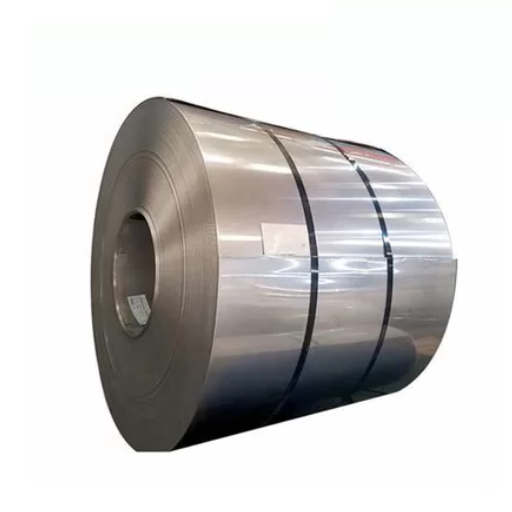
High-Strength Low-Alloy (HSLA) HC500LA coils are advanced metals designed to deliver exceptional performance in extreme conditions. With superior strength-to-weight characteristics, these coils are widely used in the automotive industry for weight reduction and structural ruggedness. Excellent mechanical properties enable their use for structural components of vehicles, where both safety and efficiency are of utmost importance. Apart from these, the coils are also suitable for forming and welding, allowing even broader applications in manufacturing operations. These features underscore the significance of HC500LA coils in contemporary automobile engineering.
What are HSLA Coils?
High-strength low-alloy (HSLA) or high-strength low-alloy (HSLA) is a special steel materials that provide unusually high strength, improved toughness, and corrosion resistance while retaining the light structure; thus, they are suitable for more demanding uses in various industries such as automotive and construction.
Importance of HSLA in the Automotive Industry
High-strength low-alloy steels find key applications in automotive engineering today due to their composite property profile. In general, these materials enhance the performance, safety, and efficiency of vehicles while also contributing to sustainability. Here are five principal reasons that explain the nature of the affinity of HSLA for the automotive industry:
- Weight Reduction and Fuel Efficiency
High-strength HSLA steel is lighter than traditional carbon steel. That lowered weight further helps achieve improved fuel efficiency, which in turn results in reduced pollutant emissions and compliance with stringent environmental legislation. For instance, a 10 percent reduction in vehicle weight typically leads to a 6-8 percent improvement in fuel economy.
- Enhanced Safety and Crashworthiness
Being very strong and tough, HSLA steels enable the design of body parts capable of absorbing and distributing the energy from an impact, thus ensuring passenger safety through improved crashworthiness of the vehicle.
- Corrosion Resistance and Durability
Due to their alloying elements, HSLA steels exhibit improved corrosion resistance, making them highly durable over extended periods. Hence, they help reduce maintenance costs and extend the vehicle’s life, particularly in areas with severe weather or poor road conditions.
- Cost-effectiveness in Fabrication
These steels are also among those that offer a good price-to-performance ratio, standing in direct contrast to other materials such as aluminum or carbon fiber. Indeed, it lends itself to a great many automotive applications without imposing a significant cost increase on the rest of the car manufacturing process.
- Adaptability to Complex Design
HSLA steel has excellent formability, making it well-suited for creating automotive parts with intricate and detailed geometries. This enables the combination of aerodynamic and sleek components that enhance both performance and aesthetics while maintaining structural integrity.
All these qualities make HSLA vital in carving out safer, more efficient, and sustainable vehicles for tomorrow’s automotive industry.
Overview of HC500LA Specifications
HC500LA is High Strength Low Alloy (HSLA) steel usually employed in automotive manufacturing because of the excellent combination of strength, formability, and durability offered by it. Such a steel has been designed to face the rigorous environment of modern vehicle production, ensuring safety, performance, and sustainability.
Here are the final specifications and properties of HC500LA in line with industrial standards:
- Tensile Strength: At about 500-700 MPa, providing strong resistance against deformation when subject to stress.
- Yield Strength: Usually ranges from 380-500 MPa, bearing loads of huge capacity without yielding.
- Elongation: Good ductility, with elongation being generally in the range of 18-25%, thus facilitating intricate forming operations.
- Thickness Range: The thicknesses offered by HC500LA range from 0.50mm to 2.50mm, making it suitable for various automotive applications.
- Coating Options: Can be supplied with a coating of galvanization, among others, for corrosion protection.
- Weldability: Excellent weldability, enabling integration of components in modern vehicle structures.
- Application:
- Reinforcement components, such as B-pillars and cross-members.
- Structural components require high strength and crashworthiness.
- Chassis and suspension components.
The grade HC500LA complies with the stringent quality standards, such as EN 10149-2 for hot-rolled structural steels, thereby respecting the automotive industry’s continuous pursuit of lighter, safer, and more resilient materials. From the combination of its mechanical properties and chemical composition, this protects its place as a prominent choice for future vehicles.
Chemical Composition of HSLA HC500LA Steel
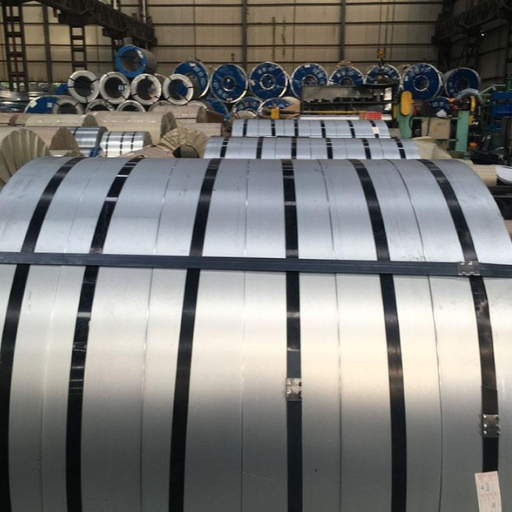
The chemical composition of the HSLA HC500LA steel has been specifically designed to balance strength and formability. Major elements usually comprise:
- Carbon (C): Max 0.12%
- Manganese (Mn): Max 1.50%
- Phosphorus (P): Max 0.02%
- Sulfur (S): Max 0.015%
- Aluminum (Al): Min 0.015%
The compound synthesis is targeted at achieving enhanced mechanical properties while maintaining weldability and toughness to meet the requirements of high-performance automotive applications.
Key Elements and Their Roles
- Carbon (C):
Carbon determines the strength and hardness levels of steel. However, according to Forman and Mark, with a carbon content of over 0.12%, lower formability and weldability are exhibited, thus limiting its concentration to a maximum of 0.12%. Hence, the allowed limited amount ensures an acceptable balance between strength and ductility.
- Manganese (Mn):
Manganese is an essential element for imparting strength and toughness. Present up to 1.50%, it assists in deoxidizing the steel, reduces brittleness, enhances wear resistance, and allows the steel to undergo several forming processes.
- Phosphorus (P):
Phosphorus imparts strength, machinability, and corrosion resistance, but simultaneously imparts brittleness to the metal. Therefore, the phosphorus concentration is appropriately capped at 0.020% to retain high toughness, preventing cracking under stress.
- Sulfur (S):
Sulfur is limited to a maximum amount of 0.015%, as excess amounts cause decreases in ductility. However, a tiny concentration of sulfur greatly improves machinability, particularly in certain manufacturing cases.
- Aluminum (Al):
Aluminum is added in a minimum quantity of 0.015% to act as a deoxidizer, which helps maintain the fine-grained structure. This element also enhances toughness and reduces the likelihood of inclusion defects in the steel, thereby improving quality and performance.
By controlling these elements very strictly, LA steel can strike the balance of being both durable and formable, that are needed for demanding automotive applications.
Comparison with Other Alloy Steels
| Parameter | HSLA HC500LA | A36 Steel | A572 Grade 50 | A656 Grade 60 |
|---|---|---|---|---|
| Yield Strength (MPa) | 500–620 | 250 | 345 | 415 |
| Tensile Strength (MPa) | 550–710 | 400–550 | 450–620 | 485–620 |
| Elongation (%) | ≥12 | 20 | 18 | 17 |
| Alloying Elements | Nb, Ti, Mn, Si, P | Mn, P, S, Si, Cu | Mn, P, S, Si | Mn, P, S, Si, V, Ti, N |
| Applications | Automotive, structural components | General construction, bridges | Infrastructure, heavy equipment | Load-bearing structures |
| Weldability | Excellent | Good | Good | Moderate |
| Corrosion Resistance | Moderate | Low | Moderate | Moderate |
Understanding EN 10268 Standards
EN 10268 is an accepted standard, and as such, it specifies the technical delivery conditions for cold-rolled steel flat products that offer the utmost strength and formability in automotive applications. It also ensures that the materials are consistent in their mechanical properties and chemical composition, thereby delivering optimal performance.
Primarily, the standards describe High-Strength Low-Alloy (HSLA) steels, dual-phase steels, and specific grades that aim to strike a balance between strength and ductility. The mechanical properties covered include minimum yield strengths ranging from 180 MPa to 460 MPa, tensile strength values from 300 MPa to 600 MPa according to the grade, and elongations that indicate the formability of the material, ensuring a minimum to guarantee the flexibility of automotive manufacturing processes.
EN 10268 defines strict chemical composition limits for carbon (up to 0.12% max for some grades), manganese, phosphorus, sulfur, and other residual elements. The limited compositions ensure that the steel has been optimally alloyed for better toughness, good weldability, and resistance to wear and tear.
Steel complying with EN 10268 was therefore delivered to the automotive manufacturers for high-performance use in structural reinforcements, crash-worthy components, and other critical vehicle sections. This product specification standard enhances the reliability of the product, improves the manufacturing process, and encourages innovative, lightweight, and durable design.
Mechanical Properties of HC500LA Steel
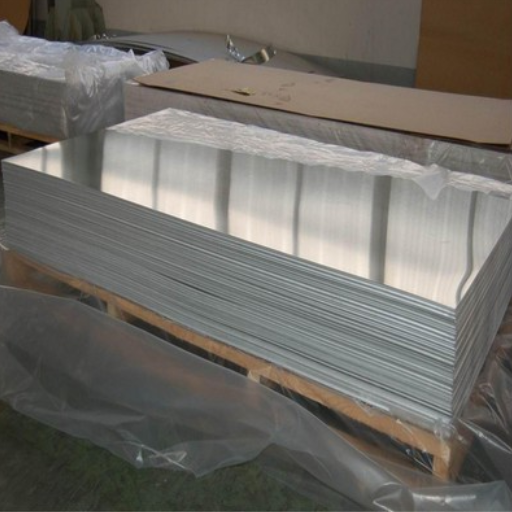
The quality exhibited by HC500LA steel is a good combination of high strength and good formability, which is necessary for severe applications. The key mechanical properties are:
– Yield Strength: Minimum of 500 MPa
– Tensile Strength: In the range of 550–670 MPa
– Elongation at Break: At least 16% (Varies with thickness)
These properties make HC500LA steel a durable and reliable material that is also flexible enough for use in automotive and industrial applications.
Tensile Strength and Ductility
When listing the tensile strengths and ductilities of particular steels, such as HC500LA, several conditions come into focus. These properties ensure a precise balance between strength and flexibility needed for application in demanding environments. The following are the aspects of tensile strength and ductility described:
- Yield Strength: 500 MPa minimum to maintain structural integrity during load bearing.
- Tensile Strength Range: Between 550 and 670 MPa, wherein the material undergoes considerable stress without failing.
- Elongation at Break: 16% minimum to afford the required ductility for forming and shaping processes.
- Work Hardening Index: Demonstrates excellent strain hardening, strengthening the material upon deformation.
- Thickness Dependency: Mechanical properties vary according to material thickness, ensuring consistent performance across various applications.
These indicators illustrate the robust yet flexible nature of the material, which can meet the technical demands.
Impact Resistance and Hardness
The material enjoys an excellent reputation for its impact resistance and hardness, which dictate its usage in highly demanding circumstances. Below are five essential points and data-related information concerning these properties:
- High Impact Strength: The impact strength exceeds 50 kJ/m², enabling it to withstand high-stress applications.
- Scratchability: Tested for hardness above 8H, i.e., resistant to scratching by abrasive material.
- Temperature Variation: Maintains its impact resistance from -40°C to 150°C.
- Durability: Resists repeated dynamic loads without cracking and fracturing, ensuring long service life.
- Indentation Hardness: Achieved Vickers hardness value of approximately 220HV, showing that it is highly resistant to surface deformation.
These properties enable the material to withstand mechanical stresses and resist surface damage, thereby having a broad application realm in advanced engineering solutions.
Cold Forming Capabilities
During cold forming, also known as cold forging, pressure is employed to reshape metals at room temperature into precise components possessing enhanced strength properties. This production method, which utilizes pressure, is highly efficient in terms of manufacturing, with minimal material waste and low energy consumption levels.
Advantages of Cold Forming:
- Material Strength Enhancement: The process of strain-hardening occurs when the material suffers deformation during cold forming, thus increasing the tensile strength and hardness of the material.
- High Accuracy: Both very close tolerances and complex shapes can be attained without extensive machining, thereby saving time and cost.
- Surface Finish: The process provides a smooth surface finish and typically does not require further processing.
- Eco-Friendly Process: Cold forming uses far less energy than does hot forging, while also causing less scrap material.
Modern Data and Applications:
- Some 40 percent more design freedom is offered by cold forged components in its use in the automotive industry, which includes bolts, shafts, and fasteners in various types.
- Recent studies reveal that cold forming can result in up to a 20% reduction in material costs through design optimization, making it an economically sound alternative.
- This process treats a variety of metals, including aluminum, copper, steel, and titanium alloys, with recent advances increasing the possible deformation rate to up to 1,500 parts per minute in some fully automated machines.
Cold forming is finding new applications in high-performance material and precision engineering industries, wherein innovation meets sustainability to provide future-ready solutions.
Applications of HSLA HC500LA Coils
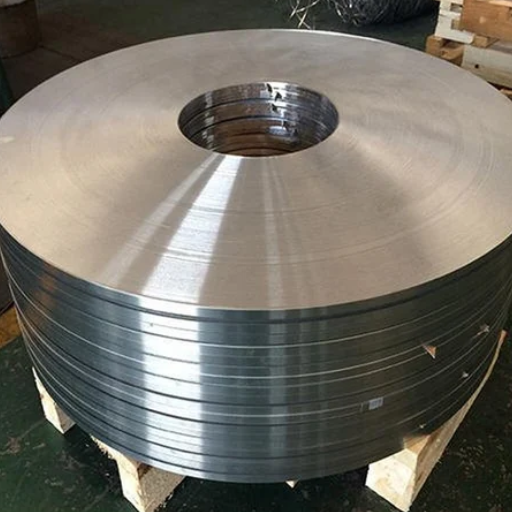
| Application | Description |
|---|---|
| Door Beams | Reinforce vehicle doors for side-impact protection. |
| Chassis Frames | Provide a structural backbone for vehicle stability. |
| Roof Reinforcements | Strengthen the roof for rollover safety. |
| Seat Rails | Support seat mounting and adjustment mechanisms. |
| Pillars (A, B, C) | Maintain the vehicle’s structural integrity. |
| Crash-Relevant Parts | Absorb energy during impacts for safety. |
| Suspension Systems | Enhance vehicle suspension durability. |
| Subframes | Support vehicle underbody components. |
| Industrial Applications | Used in machinery and structural components. |
Usage in Automotive Manufacturing
HSLA HC500LA coils lie at the heart of automobile-making processes due to the strength, durability, and light-weight properties they bear. Under those qualities, they can improve vehicle performance while reducing vehicle weight. Some of the uses of HSLA HC500LA in the automotive domain have been given below:
- Structural Components
Structural components such as beams, pillars, or chassis frames commonly use HSLA HC500LA coils. Their high strength ensures a superior crash performance and enhanced safety for the vehicle.
- Body Panels
These coils are used in outer body panels, such as doors, roofs, and hoods, wherein strength and surface finish are critical for both aesthetics and functionality.
- Reinforcements
HSLA HC500LA coils are used for critical reinforcements, such as seat rails, bumper supports, and cross-members, to offer maximum strength and rigidity with minimal weight.
- Suspension System
With the ability to resist stresses and deformation, these coils are used in suspension systems to enhance durability and load management.
- Fuel and Exhaust
HSLA HC500LA coils are used to fabricate fuel tanks and exhaust pipes, leveraging their corrosion resistance and mechanical strength for reliable performance and efficient operation.
Such applications prove the versatility and reliability of HSLA HC500LA coils for promoting automotive design and engineering.
Other Industries Utilizing HSLA Steels
Due to their versatility, high-strength low-alloy (HSLA) steels are utilized in various industries beyond automotive engineering. Industrial sectors that can be named as the heavy consumers of HSLA steels, with their further applications, are given below:
- Construction and Infrastructure
In the construction industry, HSLA steels are used in structural members, including beams, columns, and bridges. The relatively high strength-to-weight ratio, combined with their weather resistance, gives them an edge for use in high-rise buildings and long-span bridges where both durability and load-bearing capacity are of paramount importance.
- Energy and Oil & Gas
The energy sector uses HSLA steels for designing pipelines, offshore drilling platforms, and storage tanks. Their high toughness and corrosion resistance prevent failures under conditions involving high pressure and extreme environments.
- Heavy Machinery and Equipment
The heavy machinery and equipment industries utilize HSLA steels for manufacturing components such as frames, booms, and buckets for cranes, excavators, and agricultural equipment. These steels offer resistance to severe mechanical stress, thereby ensuring reliability and a long service life.
- Shipbuilding and Marine Applications
In marine applications, HSLA steels are used in shipbuilding for the fabrication of ship hulls, decks, and other related marine structures. Being strong and resistant to saltwater corrosion, they are considered essential for enhancing the safety and lifespan of ships and offshore installations.
- Defense and Aerospace
In the defense and aerospace industries, applications of HSLA steels are those requiring a high strength-to-weight ratio, with transparency to weight at distinct extremes, such as armor plating, aircraft frames, and missile systems. Their ability to withstand extreme forces and temperatures ensures structural integrity under critical operations.
These industries exemplify the ability of HSLA steels to adapt in addressing the varied challenges facing modern engineering and manufacturing.
Customization Options for Specific Applications
In terms of customization possibilities for specific applications, I focus on determining the correct alloying elements and processing methods to achieve the desired properties of HSLA steel. These can be modified to change strength, ductility, or corrosion resistance to suit the requirements of the application, whether it is aerospace, defense, or industrial. This ability to change course is crucial so that I can deliver efficient and reliable applications to mission-critical operations.
Comparative Analysis of HSLA HC500LA with Other Materials
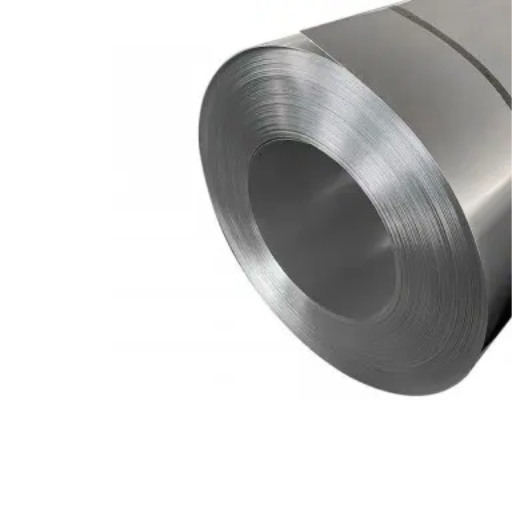
| Parameter | HSLA HC500LA | Mild Steel | Aluminum Alloys | Stainless Steel |
|---|---|---|---|---|
| Yield Strength (MPa) | 500–620 | 250–400 | 200–300 | 200–500 |
| Tensile Strength (MPa) | 550–710 | 400–550 | 300–500 | 500–750 |
| Elongation (%) | ≥12 | ≥20 | ≥10 | ≥40 |
| Density (g/cm³) | 7.85 | 7.85 | 2.7 | 7.75–8.0 |
| Corrosion Resistance | Moderate | Low | High | Very High |
| Weldability | Excellent | Excellent | Moderate | Moderate |
| Formability | Good | Excellent | Good | Moderate |
| Cost | Moderate | Low | High | High |
| Applications | Automotive, structural parts | General construction, pipelines | Aerospace, lightweight designs | Medical, food, chemical uses |
Comparison with Traditional Steel Alloys
| Parameter | HSLA HC500LA | Traditional Steel Alloys |
|---|---|---|
| Yield Strength (MPa) | 500–620 | 250–400 |
| Tensile Strength (MPa) | 550–710 | 400–600 |
| Elongation (%) | ≥12 | ≥20 |
| Density (g/cm³) | 7.85 | 7.85 |
| Corrosion Resistance | Moderate | Low |
| Weldability | Excellent | Good |
| Formability | Good | Excellent |
| Weight Efficiency | High strength-to-weight ratio | Lower strength-to-weight ratio |
| Cost | Moderate | Low |
| Applications | Automotive, structural components | General construction, pipelines |
Advantages over Micro-alloyed Steels
| Parameter | HSLA HC500LA | Other Micro-alloyed Steels |
|---|---|---|
| Yield Strength (MPa) | 500–620 | 260–500 |
| Tensile Strength (MPa) | 550–710 | 400–600 |
| Weight Efficiency | Higher strength-to-weight ratio | Moderate strength-to-weight ratio |
| Corrosion Resistance | Moderate | Low to moderate |
| Weldability | Excellent | Good |
| Formability | Good | Moderate |
| Crash Performance | Superior energy absorption | Moderate energy absorption |
| Applications | Automotive, structural parts | General structural components |
Performance Metrics Against AHSS
| Parameter | HSLA HC500LA | AHSS |
|---|---|---|
| Yield Strength (MPa) | 500–620 | 500–1200 |
| Tensile Strength (MPa) | 550–710 | 600–1500 |
| Elongation (%) | ≥12 | 10–20 |
| Density (g/cm³) | 7.85 | 7.85 |
| Corrosion Resistance | Moderate | Moderate to high |
| Weldability | Excellent | Moderate |
| Formability | Good | Moderate |
| Crash Performance | Good energy absorption | Superior energy absorption |
| Cost | Moderate | High |
| Applications | Automotive, structural parts | Automotive, safety-critical parts |
References
- Material Standards Organizations:
- Websites like ASTM International or SAE International often provide detailed material specifications and standards.
- Steel Manufacturer Websites:
- Companies like Thyssenkrupp Materials and ArcelorMittal provide technical data and applications for steel grades.
- Engineering Journals:
- Platforms like ScienceDirect or SpringerLink host peer-reviewed articles on materials science and engineering.
Frequently Asked Questions (FAQ)
What are the mechanical properties of HC500LA steel coils?
HC500LA steel coils exhibit high yield strength levels, typically around 500 MPa, making them suitable for high-strength applications. Their mechanical properties ensure good formability and weldability, which are essential for automotive chassis components.
What is the chemical composition of HC500LA steel?
The steel chemical composition of HC500LA includes elements such as carbon, manganese, niobium, and vanadium. These elements contribute to the overall strength and structural integrity of the steel, ensuring it meets the requirements specified by standards such as DIN and ASTM.
How does the thickness of HC500LA steel sheets affect their performance?
The thickness of HC500LA steel sheets plays a crucial role in their performance. Thicker sheets generally provide enhanced structural integrity and improved yield strength, while thinner sheets offer better formability for stamping and other applications.
What are the benefits of using high-strength low-alloy steel in automotive applications?
High-strength low-alloy steel, such as HC500LA, offers several benefits in automotive applications, including reduced weight without compromising strength. This results in improved fuel efficiency and better handling. Additionally, their high yield strength levels make them ideal for chassis reinforcement.
How does the microstructure of HC500LA steel influence its properties?
The microstructure of HC500LA steel, characterized by a refined grain structure resulting from microalloying, significantly influences its mechanical properties. This refinement enhances the steel’s yield strength and weldability while maintaining good formability.
What is the significance of meeting VDA 239-100 standards for HC500LA steel?
Meeting VDA 239-100 standards is crucial for HC500LA steel, as it ensures compliance with the automotive industry’s requirements for quality, safety, and performance. This includes aspects such as corrosion resistance, weldability, and structural integrity, which are essential for automotive chassis components.
How does the cold-rolled process affect HC500LA steel coils?
The cold-rolled process enhances the surface finish and dimensional accuracy of HC500LA steel coils. This method also enhances the yield strength and enables better control over thickness and flatness, making the steel suitable for high-precision applications in the automotive sector.
What customization options are available for HC500LA steel sheets?
Customization options for HC500LA steel sheets include varying thicknesses, surface coatings, and mechanical properties tailored to specific applications. This flexibility allows manufacturers to meet diverse requirements in automotive and structural applications, ensuring optimal performance.







